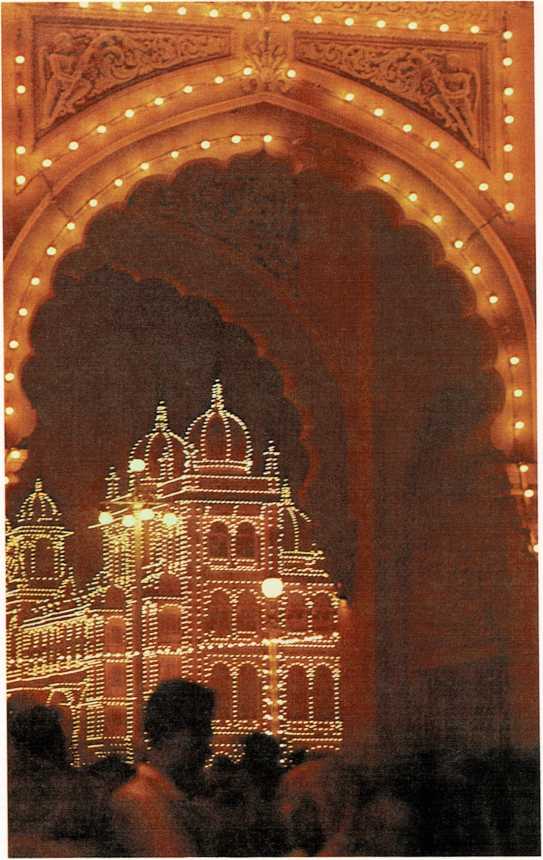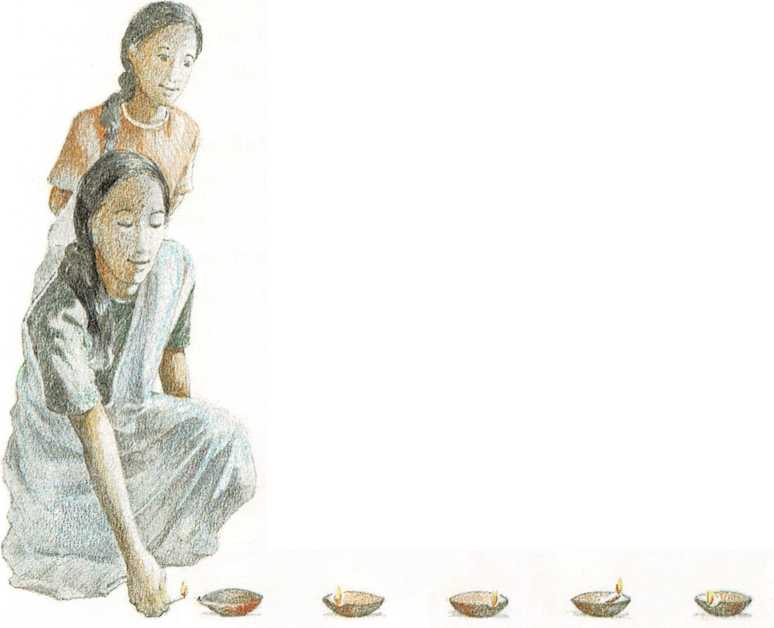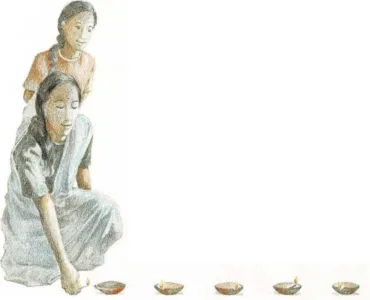Divali
The Festival of Lights
It is late autumn in India, the day before Divali, or the Festival of
Lights. For many who practice the Hindu religion, Divali is the first
day of the new year.
In many homes, the children are busy making special holiday lamps. They
fill little clay bowls with mustard oil. Into the oil they put a little
wick made of cotton. These lamps are a very important part of Divali.
They are lit on the fourth day of this five-day festival. Divali means
\”row of lights.”
While the children are making the Divali lamps, mothers and grandmothers
are getting ready for the holiday, too. The walls and floor of the house
are whitewashed, and garlands of flowers are hung over the door. Sweet
cakes and candies are prepared.
The next day—Divali—everyone gets up early. The day is spent
visiting relatives. There are lots of good things to eat, and gifts are
exchanged. There may also be a visit to a street fair, where the
children can go on rides and watch fireworks.
Before sunset, each family sets out its Divali lamps. These are placed
in a row along the roof, on window sills, and on the road or street
leading to the house. As the sky grows dark, the lamps are lit. All over
the countryside the little lights glow, like stars brought down from the
sky.
Hindu children know that these lights will
During the Festival of Lights, many palaces and other buildings in
India are outlined with strings of electric lights.


help guide Lakshmi, the goddess of wealth and good luck. She will fly
down to earth on the back of the Heavenly Swan and visit each house
where the lamps are twinkling. Then, the family in that house will be
blessed with good luck for a whole year.

